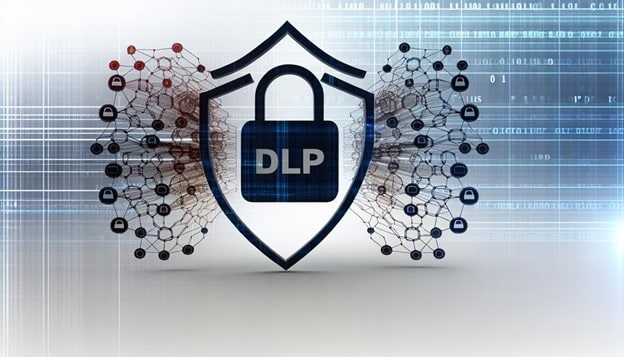Data Loss Prevention (DLP) has become crucial in today’s data-driven business landscape to protect sensitive information. Organizations face the daunting task of selecting the right DLP solution from the multitude of available options.
This discussion aims to provide valuable insights into DLP strategies and tools for business, helping mitigate data loss risks effectively. It covers various aspects, from understanding the importance of DLP policies to evaluating and selecting suitable solutions.
By equipping readers with the necessary knowledge, this exploration empowers them to navigate the world of data protection confidently.
Importance of DLP in Business Data Protection

The importance of Data Loss Prevention (DLP) in business data protection cannot be overstated. DLP plays a crucial role in safeguarding sensitive business information and mitigating potential risks associated with data breaches. In today’s digital age, where cyber threats are on the rise, businesses must prioritize data protection to maintain their competitive edge.
Implementing effective DLP strategies ensures that sensitive data remains confidential, intact, and accessible only to authorized individuals.
DLP for businesses involves the creation and enforcement of policies that govern the handling, storage, and transmission of sensitive data. These policies outline the guidelines and procedures for data classification, encryption, user access controls, and monitoring activities. By implementing DLP solutions and technologies, organizations can identify, track, and protect sensitive data across multiple platforms and devices.
An effective DLP strategy combines technology, processes, and employee awareness to minimize the risk of data loss or unauthorized disclosure. It includes regular risk assessments, comprehensive employee training programs, well-defined incident response plans, and continuous monitoring of data flows. Additionally, organizations should establish a robust incident management system to promptly detect and respond to any data breaches.
It is important to note that the benefits of DLP extend beyond just protecting sensitive business data. DLP also helps organizations comply with industry regulations and maintain the trust of their customers. By implementing robust data protection measures, businesses can demonstrate their commitment to privacy and security, enhancing their reputation and credibility in the marketplace.
Understanding DLP Policies and Regulations
Key considerations for businesses in understanding DLP policies and regulations are crucial to ensure the protection and security of sensitive data. These policies define rules and guidelines for data handling, specify sensitive information, and outline steps to prevent data loss or leakage.
When creating DLP policies, businesses must consider various factors, including their industry, the types of data they handle, and applicable legal or regulatory requirements. A thorough risk assessment is essential to identify potential risks and vulnerabilities in data handling processes.
Businesses must also consider privacy and data protection regulations that apply to their operations, such as the General Data Protection Regulation (GDPR) in the European Union or the California Consumer Privacy Act (CCPA) in the United States. Compliance with these regulations is crucial to avoid legal consequences and reputational damage.
To effectively enforce DLP policies, businesses should invest in appropriate technology solutions. These solutions can include data classification tools, encryption mechanisms, access controls, and monitoring systems to detect and prevent unauthorized data transfers or leaks.
Identifying and Assessing Data Vulnerabilities

In order to effectively secure data in a business environment, it is crucial to identify and assess vulnerabilities in data.
This process involves implementing data classification methods to categorize data based on its sensitivity and value. By doing so, targeted protection measures can be put in place.
Additionally, conducting risk assessments assists in identifying potential threats and vulnerabilities. This enables organizations to prioritize their efforts in mitigating these risks.
The use of vulnerability scanning tools further enhances the ability to identify and address weaknesses in data security measures.
Data Classification Methods
Data classification methods play a crucial role in identifying and assessing vulnerabilities in a business’s data. By categorizing data based on its sensitivity, organizations can prioritize their efforts to protect the most critical information.
There are several methods available for data classification, each with its own advantages and considerations.
One commonly used method is table-based classification, which categorizes data into predefined criteria such as confidentiality, integrity, and availability. This method is easy to implement and provides clear categorization, allowing for consistent application of security controls.
Another approach is pattern-based classification, where algorithms analyze data to identify sensitive information based on patterns and keywords. This method can be customized to specific data types and automates the classification process.
Machine learning-based classification is also gaining popularity, using artificial intelligence to automatically classify data based on patterns and user behavior. This method adapts to evolving data patterns, reduces manual effort, and improves accuracy over time.
Choosing the right data classification method depends on the organization’s specific needs, resources, and data types. It is important to regularly review and update the classification process to address evolving threats and data vulnerabilities.
Risk Assessment Techniques
Data classification methods form the basis for identifying and assessing vulnerabilities in a business’s data. This enables organizations to prioritize their efforts in safeguarding critical information.
To effectively conduct risk assessments, businesses can utilize various techniques. One commonly employed technique is vulnerability scanning, which involves scanning the network and systems to identify potential weaknesses. This process helps to identify any security gaps and vulnerabilities that could be exploited by malicious actors.
Another technique is penetration testing, where ethical hackers simulate real-world attacks to identify vulnerabilities and evaluate the effectiveness of existing security measures.
Additionally, businesses can perform security audits and assessments to evaluate the overall security posture and identify potential weaknesses in processes, policies, and infrastructure.
Vulnerability Scanning Tools
Vulnerability scanning tools play a crucial role in identifying and assessing potential weaknesses in a business’s data security infrastructure. These tools systematically scan networks, systems, and applications to identify vulnerabilities that attackers can exploit.
By conducting automated scans, vulnerability scanning tools help businesses proactively identify and prioritize vulnerabilities, allowing them to take corrective actions before exploitation occurs. These tools use various techniques, such as port scanning, network mapping, and vulnerability identification, to assess the security posture of a business’s infrastructure.
They provide valuable insights into the vulnerabilities present in the environment, enabling businesses to address them through patches, configuration changes, or other security measures.
Additionally, vulnerability scanning tools aid in compliance with industry regulations and standards by continuously monitoring and assessing the security posture of the organization’s data assets.
Implementing Robust Access Controls and User Training

To ensure effective implementation of robust access controls and user training, businesses must employ comprehensive strategies and utilize advanced technologies.
A layered approach to access controls is essential, incorporating strong authentication methods like multi-factor authentication, role-based access controls, and least privilege principles. These measures play a crucial role in preventing unauthorized access to sensitive data and ensuring that only authorized personnel can access protected information.
Equally important is user training, which helps prevent data loss incidents. Employees should receive education on the importance of data protection, the risks associated with mishandling sensitive information, and best practices for data security. Training sessions should cover topics such as password management, phishing awareness, and social engineering tactics. Regular training sessions and refresher courses should be conducted to keep employees up to date with the latest security threats and mitigation strategies.
In addition to comprehensive strategies, businesses should leverage advanced technologies to enhance access controls and user training. For example, implementing data loss prevention (DLP) software can monitor and control data in motion, at rest, and in use. DLP solutions can help identify and prevent unauthorized data transfers, enforce encryption policies, and monitor user behavior for potential policy violations. Such technologies are instrumental in maintaining a secure environment for sensitive data.
Monitoring and Detecting Data Leakage Incidents
Effective monitoring and detection of data leakage incidents is vital for businesses to protect their sensitive information and maintain a secure environment. Implementing robust monitoring systems allows organizations to proactively identify and respond to potential data breaches, minimizing the risk of data loss or unauthorized access.
To effectively monitor and detect data leakage incidents, businesses can utilize a combination of tools and strategies including:
- Network Monitoring: This strategy involves monitoring network traffic and analyzing data flows to identify any anomalies or suspicious activities that may indicate data leakage.
- Endpoint Monitoring: By monitoring endpoints such as laptops, desktops, and mobile devices, businesses can track user activities and detect any unauthorized attempts to access or transmit sensitive data.
- Data Loss Prevention (DLP) Solutions: DLP solutions provide advanced capabilities for monitoring and detecting data leakage incidents. These solutions analyze data in real-time, apply predefined policies, and trigger alerts or block the transmission of sensitive information.
- User Behavior Analytics (UBA): UBA solutions analyze user behavior patterns to identify any abnormal activities that may indicate data leakage. These solutions help detect insider threats and malicious intent.
The table below summarizes these monitoring and detection strategies:
| Monitoring Strategy | Description |
|---|---|
| Network Monitoring | Monitors network traffic and data flows to identify anomalies or suspicious activities. |
| Endpoint Monitoring | Tracks user activities on endpoints to detect unauthorized access or transmission of sensitive data. |
| Data Loss Prevention | Analyzes data in real-time, applies policies, and triggers alerts or blocks transmission of sensitive information. |
| User Behavior Analytics | Analyzes user behavior patterns to detect abnormal activities that may indicate data leakage, insider threats, or malicious intent. |
Encrypting Sensitive Data at Rest and in Transit

Encrypting sensitive data at rest and in transit is a crucial security measure for businesses to protect their information from unauthorized access or interception. This practice ensures that even if the data is stolen or intercepted, it remains unreadable and unusable to unauthorized individuals.
Below are five reasons why encrypting sensitive data is vital for businesses:
- Protection against data breaches: Data encryption prevents unauthorized individuals from accessing sensitive information, reducing the risk of data breaches and the associated financial and reputational damage.
- Compliance with regulations: Many industries have strict regulations regarding data security, and encrypting sensitive data helps businesses meet these requirements.
- Secure storage and backups: Encrypting data at rest ensures that even if physical storage devices or backups are lost or stolen, the data remains protected.
- Secure communication: Encrypting data in transit, such as through email or file transfers, ensures that the information cannot be intercepted or tampered with during transmission.
- Building customer trust and loyalty: Implementing strong encryption measures demonstrates a commitment to protecting customer data, helping to build trust and loyalty among customers.
Implementing encryption protocols for sensitive data is essential for businesses to safeguard their information, comply with regulations, secure storage and backups, ensure secure communication, and maintain customer trust and loyalty.
Implementing Data Backup and Recovery Solutions
Implementing robust data backup and recovery solutions is crucial for businesses to ensure the security and integrity of sensitive information. Data loss can occur due to various reasons, including hardware failure, software errors, human error, natural disasters, or cyberattacks. Therefore, having a reliable backup and recovery strategy is essential for minimizing the impact of these incidents and maintaining business continuity.
Several key considerations need to be taken into account when implementing data backup and recovery solutions. First, businesses must determine the frequency and type of backups required based on their specific needs and risk tolerance. This involves deciding whether to perform full backups or incremental backups and defining the retention period for backup data.
Next, businesses should carefully select appropriate backup technologies and tools. This may involve utilizing backup software that supports features like deduplication, encryption, and compression to optimize storage space and protect data confidentiality. Additionally, businesses should consider implementing offsite backups to safeguard against physical damage or loss of on-premises data.
Furthermore, regularly testing the backup and recovery process is essential to ensure its effectiveness. This includes simulating various disaster scenarios and verifying the successful restoration of data within the required timeframes.
Evaluating and Selecting DLP Solutions and Tools

When evaluating and selecting DLP solutions and tools for your business, it is crucial to thoroughly assess their functionalities and capabilities. The appropriate DLP solution can assist organizations in preventing data loss, safeguarding sensitive information, and maintaining compliance with regulatory requirements.
To make an informed decision, consider the following factors:
- Scalability: Ensure that the DLP solution can handle the volume of data within your organization and accommodate future growth effectively.
- Ease of deployment: Look for solutions that are easy to install and integrate seamlessly with your existing infrastructure, minimizing disruption to your operations.
- Accuracy: Evaluate the DLP solution’s accuracy in identifying and classifying sensitive data to avoid any false positives or negatives.
- Flexibility: Consider the solution’s ability to adapt to your specific business requirements, such as supporting multiple platforms and data types.
- Reporting and analysis: Assess the DLP solution’s reporting and analysis capabilities to gain valuable insights into data usage, policy violations, and potential vulnerabilities.
Best Practices for Effective DLP Implementation
To ensure a successful implementation of Data Loss Prevention (DLP) solutions, organizations should prioritize effective planning and gain a comprehensive understanding of their data protection requirements. By following these best practices, businesses can maximize the effectiveness of their DLP solutions and minimize the risk of data breaches or leaks.
One key best practice is conducting a thorough assessment of data assets to identify and protect sensitive information. This involves categorizing data based on its sensitivity level and identifying potential risks that could lead to data loss. Once data classification is complete, organizations should develop and enforce clear policies and procedures for data handling and protection. This includes defining access privileges for sensitive data, implementing encryption measures, and establishing user access controls.
Another important best practice is regularly educating employees about data protection policies and the importance of compliance. This helps create a culture of security awareness within the organization and reduces the likelihood of accidental data exposure.
Additionally, organizations should continuously monitor and analyze data activities to detect any potential data breaches or policy violations. This can be achieved through the use of advanced DLP technologies that provide real-time visibility and control over data movement and usage.
Frequently Asked Questions
How Does DLP Differ From Traditional Data Security Measures?
DLP distinguishes itself from traditional data security measures by focusing on preventing the loss or leakage of sensitive data, rather than solely protecting against unauthorized access. It employs a range of strategies and tools to monitor, detect, and mitigate risks associated with data loss. The emphasis is on safeguarding data from being misplaced or disclosed, rather than just securing it from unauthorized individuals.
What Are the Key Challenges Businesses Face When Implementing DLP Solutions?
Businesses face several key challenges when implementing DLP solutions. These challenges stem from the complex nature of data classification, the necessity for effective policy enforcement, the integration with existing systems, and the assurance of user compliance. Implementing DLP solutions can be a complex endeavor for businesses due to the intricacies involved in classifying data, enforcing policies effectively, integrating with current systems, and ensuring user compliance.
Can DLP Solutions Effectively Protect Against Insider Threats?
DLP solutions are effective in protecting against insider threats. They achieve this by closely monitoring and controlling data access, detecting any suspicious activities, and preventing unauthorized exfiltration of data. Businesses can greatly reduce the risk of insider breaches and data loss by implementing these solutions.
How Can DLP Solutions Assist in Regulatory Compliance?
DLP solutions play a crucial role in ensuring regulatory compliance. They help businesses by identifying and safeguarding sensitive data, enforcing strict policies to prevent unauthorized access and data breaches. Additionally, they provide robust auditing and reporting capabilities to demonstrate compliance with relevant regulations. These solutions offer a range of benefits, including the ability to protect sensitive information, prevent data breaches, and meet regulatory requirements. The benefits of DLP solutions in regulatory compliance are as follows:
- Identification and protection of sensitive data: DLP solutions enable businesses to identify and classify sensitive data such as personally identifiable information (PII), financial records, and intellectual property. By implementing measures to protect this data, organizations can ensure compliance with regulations governing data privacy and security.
- Enforcement of policies: DLP solutions enforce policies that restrict access to sensitive data and prevent unauthorized use or distribution. These policies can include rules for data handling, encryption, and access controls, helping organizations comply with regulatory requirements.
- Prevention of data breaches: DLP solutions employ advanced technologies like data loss prevention, encryption, and data masking to prevent data breaches. By monitoring data movement and applying security controls, these solutions reduce the risk of data leaks and unauthorized disclosures.
- Auditing and reporting capabilities: DLP solutions provide comprehensive auditing and reporting features to track data usage, access attempts, and policy violations. This documentation can be used to demonstrate compliance with regulatory requirements during audits or investigations.
What Are the Potential Limitations or Drawbacks of Using DLP Technology?
Potential limitations or drawbacks of using DLP technology include the presence of false positives, high implementation costs, complex configuration, and the need for continuous updates. Moreover, DLP solutions may not effectively counter advanced threats or insider attacks.
Conclusion
Data loss prevention (DLP) plays a critical role in safeguarding sensitive business information in the digital landscape. In today’s world, where data breaches and leaks pose constant threats, organizations must adopt effective DLP strategies and tools.
By understanding the importance of DLP, implementing robust policies, identifying vulnerabilities, enforcing access controls and user training, monitoring data leakage incidents, encrypting sensitive data, and implementing backup and recovery solutions, businesses can effectively mitigate data loss risks.
The selection of appropriate DLP solutions and tools is also crucial for successful implementation.
